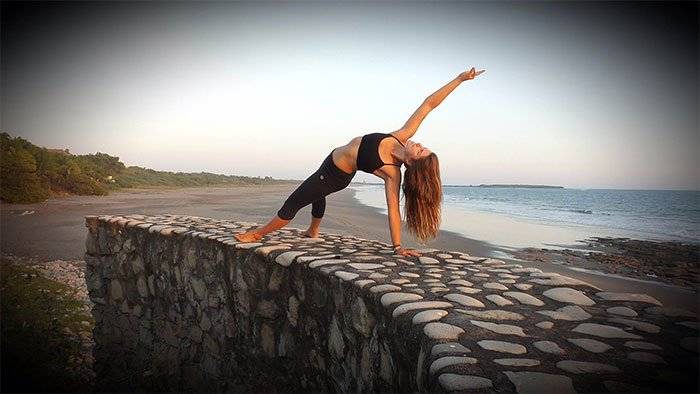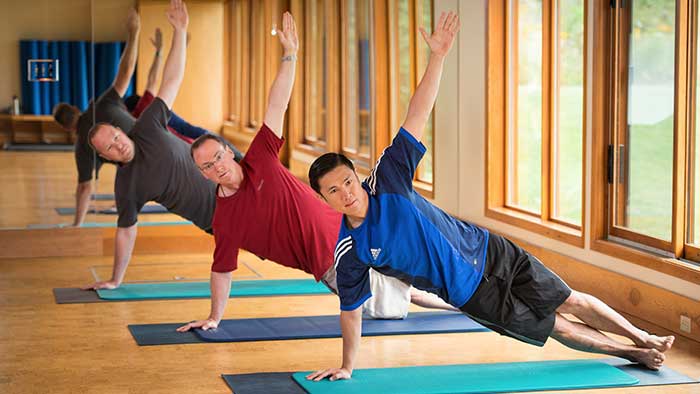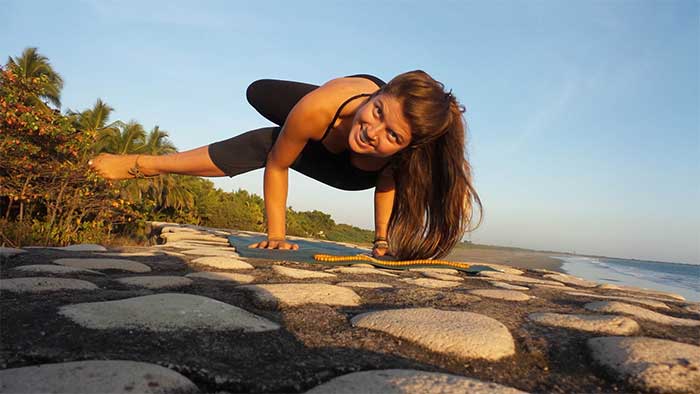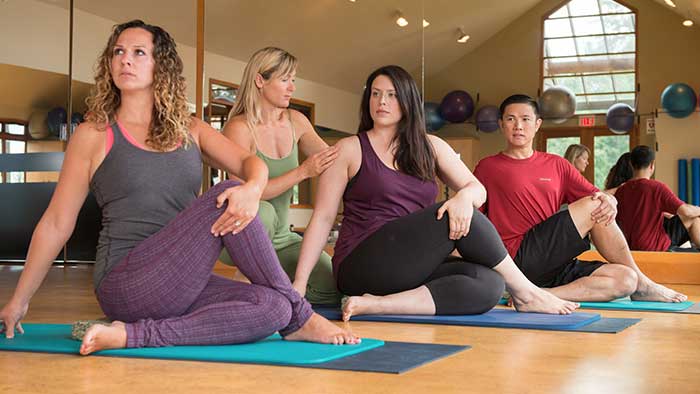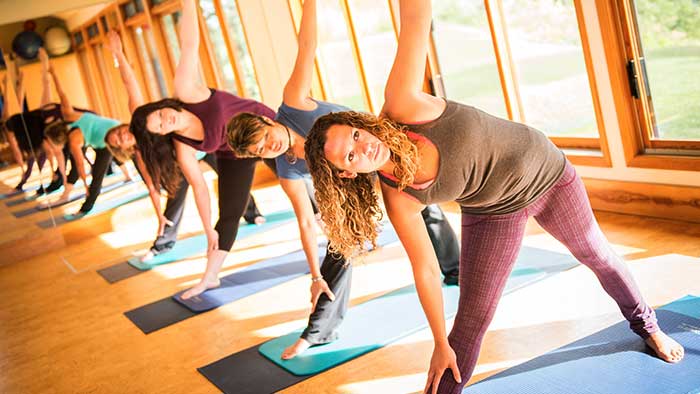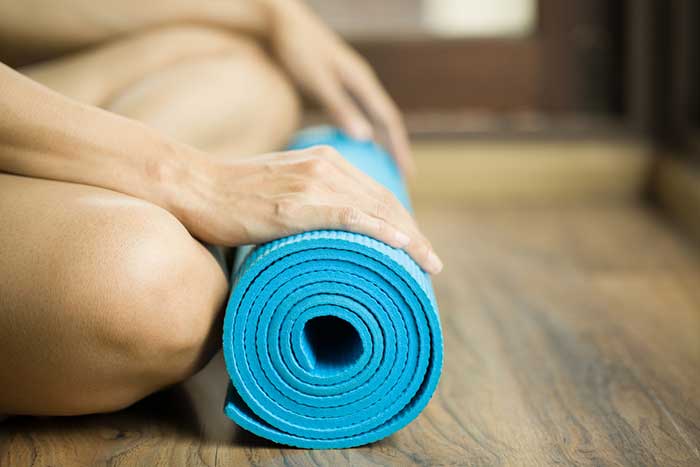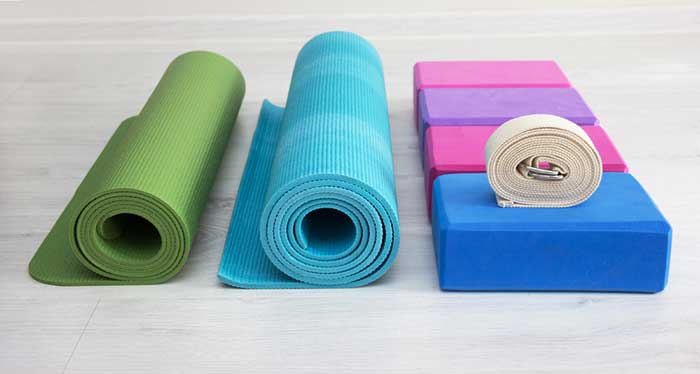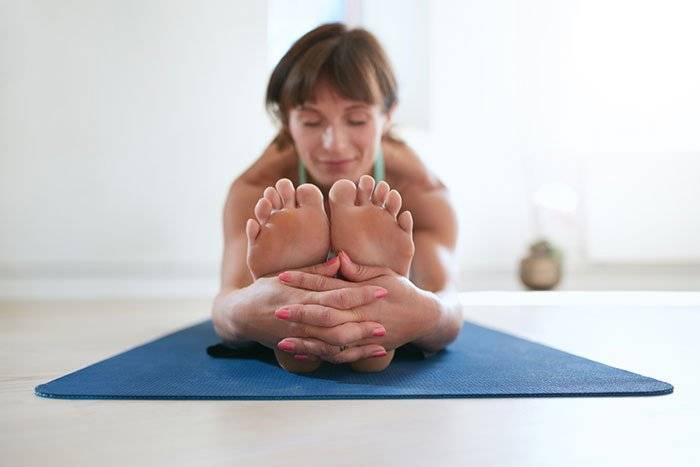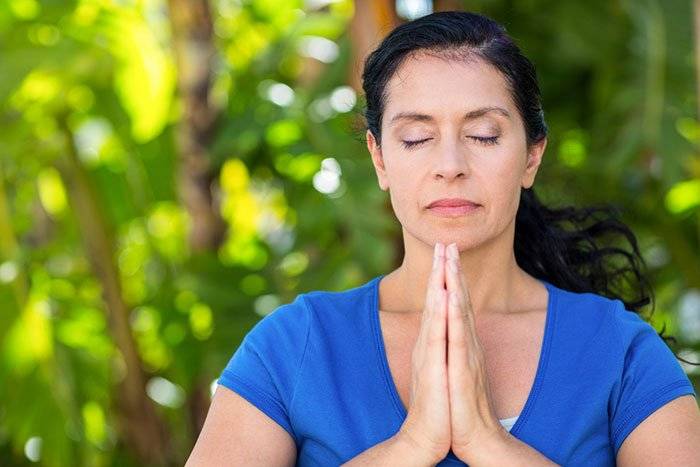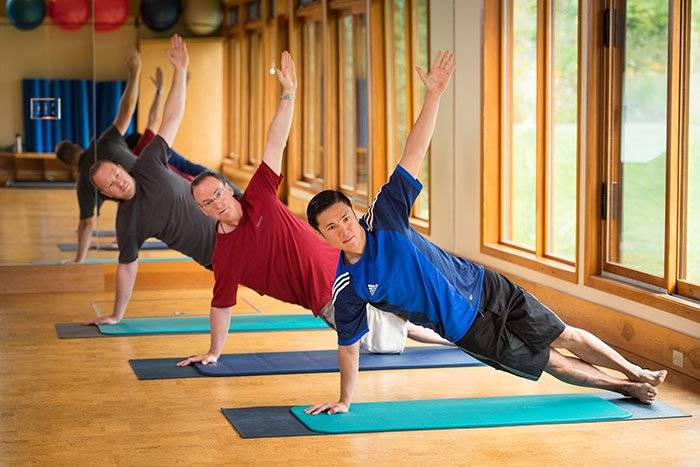What The Navy SEALs Can Teach You About Yoga
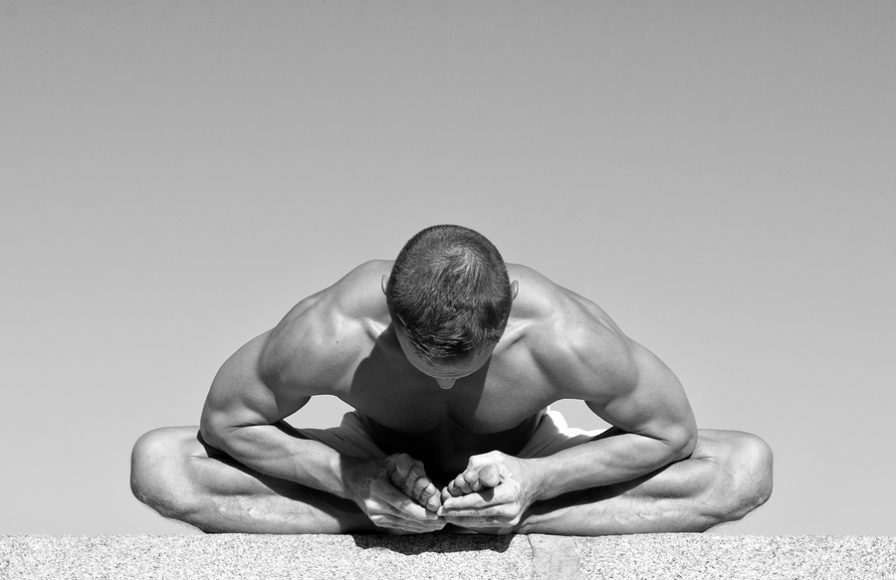
The Navy SEALs practice yoga in a very specific way to create balance across their physical, mental, and emotional abilities. So should you.
While the Navy SEALs are some of the toughest, strongest, most resilient people on earth, Clair Diab, a former military yoga instructor notes “they often need more flexibility and balance.” Due to the high-stress nature of their job, a lot of SEALs constantly battle anxiety, poor sleep, and potentially, PTSD.
Recently, the SEALs incorporated yoga into their training. But not just any yoga—they introduced a highly specialized practice with specific means to a specific end. They found that sensory-enhanced yoga not only improves flexibility, posture, and balance, but reduces anxiety, improves sleep, and helps the SEALs feel calmer. Their practice includes a unique combination of physical yoga (Hatha), breathing techniques (Pranayama), meditation, and relaxation. Additionally, they brought breathing, meditation, and visualization into combat-conditioning exercises to improve mental balance, focus, and control in all circumstances. Combining the physical prowess of a Navy SEAL with the mental clarity of a monk is a strong recipe for success. But it’s not just any yoga that drives these results. It’s a specific practice or combination of practices that led to their success, and the same should be true for you.
Yoga Roots
Think of yoga as a tree. Its roots go back to India some 3,000 years ago when meditating monks noticed how stiff they were getting from sitting for long hours each day (sound familiar?). Observing how flexible the wild and even domestic animals were around them they started incorporating animal-like stretching. Hatha, or physical yoga, was born and became the first root of the tree. Over time, Raja yoga was developed with more of a focus on meditation. Bhakti yoga rested in the emotional and devotional sphere. Jnana yoga anchored in the scriptures and wisdom path. Karma yoga rooted with an emphasis on selfless service, and Tantra brings an esoteric and ritual approach to meeting the Divine in all aspects of life. These forms of yoga became the other roots of the tree.
Evolution of yoga
Over centuries Hatha yoga has evolved. Hatha now incorporates a lot of other, less physical, forms and techniques. For example, Shavasana pose, where you lay on your back and attempt to find complete stillness in mind and body, was not originally part of Hatha yoga. Today, this pose is included at the end of almost every yoga class. In the 1950s, Hatha yoga was brought to the west, and it’s evolution accelerated. Over the past 70 years, Hatha has morphed into almost as many versions as there are types of fruits.
This evolution provides you an opportunity to do exactly what the Navy SEALs have done, and find or create a unique practice. Discover a practice that will not only benefit your specific body, but also your specific mind, heart, and soul. Perhaps that is found at one studio, or you find a combination of two or even three practices that help you strike a balance and take your health to the next level. The teacher will be a key component of your safety, enjoyment, and health benefits. So, don’t be afraid to try a few different classes to find a yogic style, and instructor, that is right for you.
Explore the many varieties of yoga
Listed below are a few class types to consider as you build a practice that creates balance in your physical, mental, emotional and spiritual health:
- Iyengar: fundamental beginners focus on holding and exploring the alignment and basic structures of the poses (asanas), gaining flexibility, balance, natural posture, and inner and physical strength
- Vinyasa: links asanas together with the breath into a gentle flow
- Ashtanga: adds a more athletic approach to the Vinyasa flow
- Bikram: a 105 degree heated room warms the muscles and adds sweating as a detox benefit to the mental and physical stamina gained from holding the same 26 poses each class
- Forrest: one of many ‘hot’ yogas but adds emotional exploration to the physical challenge
- Ishta: a flow sequence with added meditation, breathwork, and Ayurvedic cleansing techniques
- Jivamukti: a physically rigorous and intellectually stimulating focus with chanting, breathwork, and spiritual alignment to ‘non-harming’, supporting veganism and animal rights
- Kundalini: a rigorous collection of asanas, meditations, and intense breathwork designed to awaken ones psychoenergetic force (Kundalini) for spiritual elevation
So, while your local yoga gym may be full of lululemon-laden warriors pumping through a yoga class just to tone and tighten, remember there is a vast world of yoga out there waiting for you. A world that will lead to balanced health across your mind, body, and spirit. Take a step into the unknown and enjoy your exploration.
What is Mountain Trek?
Mountain Trek is the health reset you’ve been looking for. Our award-winning health retreat, immersed in the lush nature of British Columbia and featuring daily sunrise yoga and night-time restorative yoga, will help you unplug, recharge, and roll back years of stress, anxiety, and unhealthy habits. To learn more about the retreat, and how we can help you reset your health, please email us at info@mountaintrek.com or reach out below:

